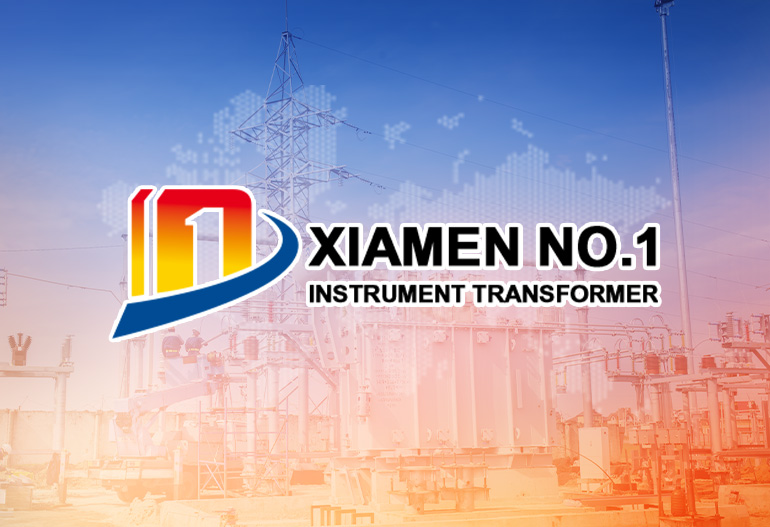Digital Outdoor Voltage Transformers for Smart Grid Integration
1. Introduction
The evolution towards smart grids necessitates a transformative shift in power measurement and monitoring technologies. Digital Outdoor Voltage Transformers (DVTs) have emerged as indispensable components, playing a crucial role in enabling real - time, high - precision voltage sensing, seamless integration with Internet of Things (IoT) and communication networks, advanced diagnostic capabilities for predictive maintenance, and support for renewable energy integration and grid modernization. In contrast to traditional electromagnetic or capacitive voltage transformers (VTs), DVTs offer distinct advantages such as immunity to electromagnetic interference (EMI), reduced size and weight (up to 70% smaller than conventional CVTs), digital output interfaces compliant with IEC 61850 standards, low power consumption, and an extended operational life.
2. Technical Principles of Digital Voltage Transformers
2.1 Core Sensing Technologies
2.1.1 Optical Voltage Sensing
Optical voltage sensing technologies rely on the interaction between light and electrical fields. Pockels Effect Sensors utilize the linear electro - optic effect in crystals like lithium niobate. When a voltage is applied, the polarization of light passing through the crystal changes proportionally. For example, in a 220kV optical VT, a Pockels cell is integrated into a fiber optic loop, and the voltage signal is transmitted as a phase - modulated light. Fiber Bragg Grating (FBG) Sensors, on the other hand, measure voltage - induced mechanical stress or temperature changes. The wavelength of light in the fiber gratings shifts in response to these changes, which can be correlated to the applied voltage.
2.1.2 Electronic Voltage Sensing
Resistive Divider VTs use high - voltage resistors (such as metal oxide or film - type resistors) to divide the input voltage. The low - voltage output is then measured by analog - to - digital converters (ADCs). Capacitive Divider VTs, similar in concept to traditional CVTs but with electronic signal conditioning, offer much faster response times, often within ≤1μs. Rogowski Coil - based VTs are inductive sensors that measure the rate of change of voltage, making them particularly suitable for transient analysis in power systems.
2.2 Digital Signal Processing and Transmission
High - precision analog - to - digital conversion is a key aspect of DVTs. 24 - bit ADCs with sampling rates up to 1 MHz are commonly used to capture high - fidelity voltage waveforms. The IEC 61850 - 9 - 2LE protocol enables time - stamped, peer - to - peer transmission of sampled values (SV) over Ethernet, ensuring accurate and timely data transfer. Redundancy mechanisms, such as dual fiber optic links and hot - swappable power supplies, are implemented to guarantee zero data loss, enhancing the reliability of the system.
3. Design Features for Outdoor and Smart Grid Applications
3.1 Environmental Adaptability
DVTs are designed to withstand harsh outdoor conditions. For coastal areas prone to salt fog and corrosion, materials like stainless steel 316L for housing, combined with PTFE coatings, can provide a service life of over 10 years. To cope with extreme temperatures ranging from - 40°C to + 85°C, temperature - compensated optical fibers are used, ensuring that the measurement accuracy drift is less than 0.01%. In the presence of high electromagnetic fields, fiber optic isolation and Faraday cage shielding can reduce EMI - induced noise by more than 30dB. For heavily polluted areas, self - cleaning silicone rubber insulators are employed, reducing the need for manual cleaning to once every 5 years or more.
3.2 Smart Grid Integration Capabilities
3.2.1 Communication Interfaces
DVTs are equipped with advanced communication interfaces. The IEEE 1588 Precision Time Protocol (PTP) enables sub - microsecond time synchronization, which is essential for phasor measurement units (PMUs). For remote substations without fiber infrastructure, 5G and LTE backhaul options are available, ensuring real - time data transmission and seamless integration with the smart grid.
3.2.2 Edge Computing Functions
Onboard microprocessors in DVTs perform various edge computing functions. They can conduct harmonic analysis up to the 50th order, detect voltage sags and swells in compliance with IEEE 1668, and estimate fault locations using traveling wave analysis. These functions enable real - time monitoring and control of the power grid, enhancing its stability and reliability.
4. Types of Digital Outdoor VTs for Smart Grids
4.1 Optical Voltage Transformers (OVTs)
4.1.1 All - Optical VT Architecture
In an all - optical VT, the high - voltage electrode induces an electric field in the Pockels crystal. Polarized light passes through the crystal, and its phase shift, which is proportional to the voltage, is detected interferometrically. The detected phase shift is then converted into a digital voltage signal. This architecture offers high accuracy and immunity to electromagnetic interference.
4.1.2 Case Study: 500kV OVT in Smart Substation
A 500kV OVT deployed in a smart substation in Shanghai features a lithium niobate crystal core with an anti - UV coating to protect against long - term sunlight exposure. Dual fiber paths are provided for redundancy using a 1 + 1 protection scheme. The OVT is integrated with the SCADA system, enabling real - time voltage stability analysis. It has achieved an accuracy of 0.1% class with a latency of less than 50μs, demonstrating its high - performance capabilities in a smart grid environment.
4.2 Electronic Voltage Transformers (EVTs)
4.2.1 Resistive Divider EVTs
Resistive Divider EVTs consist of a high - voltage arm with series - connected metal oxide resistors (with a resistance of ≥10GΩ and a temperature coefficient of <50ppm/°C) and a low - voltage arm with thin - film resistors housed in a thermally stabilized compartment. This design makes them ideal for 110kV - 220kV urban substations where space is at a premium due to their compact footprint.
4.2.2 Capacitive Divider EVTs
Capacitive Divider EVTs combine capacitive voltage division with active electronic compensation. This hybrid design eliminates the risk of ferromagnetic resonance, which is a common issue in traditional CVTs, and provides more stable and accurate voltage measurement.
4.3 Combined Digital VT/CT Units
Combined Digital VT/CT units integrate both voltage and current measurement functions, reducing the space requirements by up to 50%. For example, a 220kV combined unit may use optical voltage sensing, Rogowski coil for current measurement, and a common data processing unit with an IEC 61850 interface. This integration simplifies installation, reduces costs, and improves the overall efficiency of the substation.
5. Smart Grid Applications and Benefits
5.1 Grid Stability and Dynamic Control
DVTs play a vital role in grid stability and dynamic control through their support for Phasor Measurement Units (PMUs). By enabling synchrophasor measurements at a rate of 30 - 60 frames per second, DVTs facilitate wide - area stability monitoring, oscillation damping control, and inter - area power flow management. Additionally, their fast response times (less than 1ms) allow for quick triggering of dynamic voltage restorers (DVRs) to mitigate voltage sags and protect critical loads, ensuring the continuous and stable operation of the power grid.
5.2 Renewable Energy Integration
With the increasing penetration of renewable energy sources such as wind and solar farms, DVTs help these installations meet grid code requirements. They enable compliance with low voltage ride - through (LVRT) requirements, limit harmonic distortion within the bounds of IEEE 519, and support voltage regulation for variable generation sources. In microgrid management, DVTs enable real - time voltage control in islanded microgrids, allowing for seamless transition between grid - tied and off - grid modes, enhancing the flexibility and reliability of renewable energy integration.
5.3 Asset Health Management
DVTs are equipped with features for asset health management. Internal component temperature can be monitored using FBG sensors, moisture ingress can be detected through dielectric spectroscopy, and coating degradation can be assessed with embedded strain gauges. The real - time data from DVTs can be fed into grid asset digital twins, enabling life expectancy modeling with 90% accuracy, failure mode prediction (such as insulation aging), and optimization of maintenance scheduling. This predictive maintenance approach reduces unplanned outages, lowers maintenance costs, and extends the lifespan of grid assets.
6. Installation and Interoperability Standards
6.1 International Standards for Digital VTs
International standards play a crucial role in ensuring the quality and compatibility of DVTs. IEC 60044 - 8 defines the requirements for digital output voltage transformers, including accuracy classes and interface specifications. IEEE C37.118.1 sets the standards for synchrophasors in power systems, which is essential for the proper functioning of DVTs in smart grid applications. IEC 61850 - 9 - 2 specifies the transmission of sampled values over serial communication networks, making DVTs interoperable with other smart grid devices.
6.2 Interoperability Testing Protocols
Interoperability testing is necessary to ensure that DVTs can function seamlessly within a smart grid. Conformance testing includes electrical fast transient/burst (EFT/B) immunity testing according to IEC 61000 - 4 - 4, voltage surge protection testing as per IEC 61000 - 4 - 5, and electromagnetic compatibility (EMC) testing in compliance with CISPR 32. Field commissioning tests focus on measuring time - delay (with a tolerance of ≤100μs), ensuring data consistency across redundant channels, and assessing cybersecurity vulnerabilities to meet NIST SP 800 - 53 compliance requirements.
7. Challenges and Mitigation Strategies
7.1 Cybersecurity Risks
As DVTs are connected to communication networks, they are vulnerable to cybersecurity threats such as data tampering through network intrusion and denial - of - service (DoS) attacks on communication links. To mitigate these risks, DVTs are equipped with IEEE 1686 - 2013 compliant cybersecurity features, including secure boot using a trusted platform module (TPM), data encryption with AES - 256 for SV transmission, and intrusion detection systems (IDS) at the substation level.
7.2 Legacy System Integration
Retrofitting DVTs into substations with existing analog protection relays poses a significant challenge. To address this, protocol gateways are used to convert between IEC 61850 (used by DVTs) and IEC 60870 - 5 - 10, enabling seamless integration of new digital technologies with legacy systems. This allows for a gradual upgrade of the power grid without the need for a complete overhaul of existing infrastructure.
8. Conclusion
Digital Outdoor Voltage Transformers are essential for the successful integration and operation of smart grids. Their advanced sensing technologies, smart grid - compatible design features, and multiple applications in grid stability, renewable energy integration, and asset health management make them a cornerstone of modern power systems. Although challenges such as cybersecurity risks and legacy system integration exist, with proper mitigation strategies and adherence to international standards, DVTs will continue to drive the evolution of smart grids towards a more reliable, efficient, and sustainable future.
Share This Article



